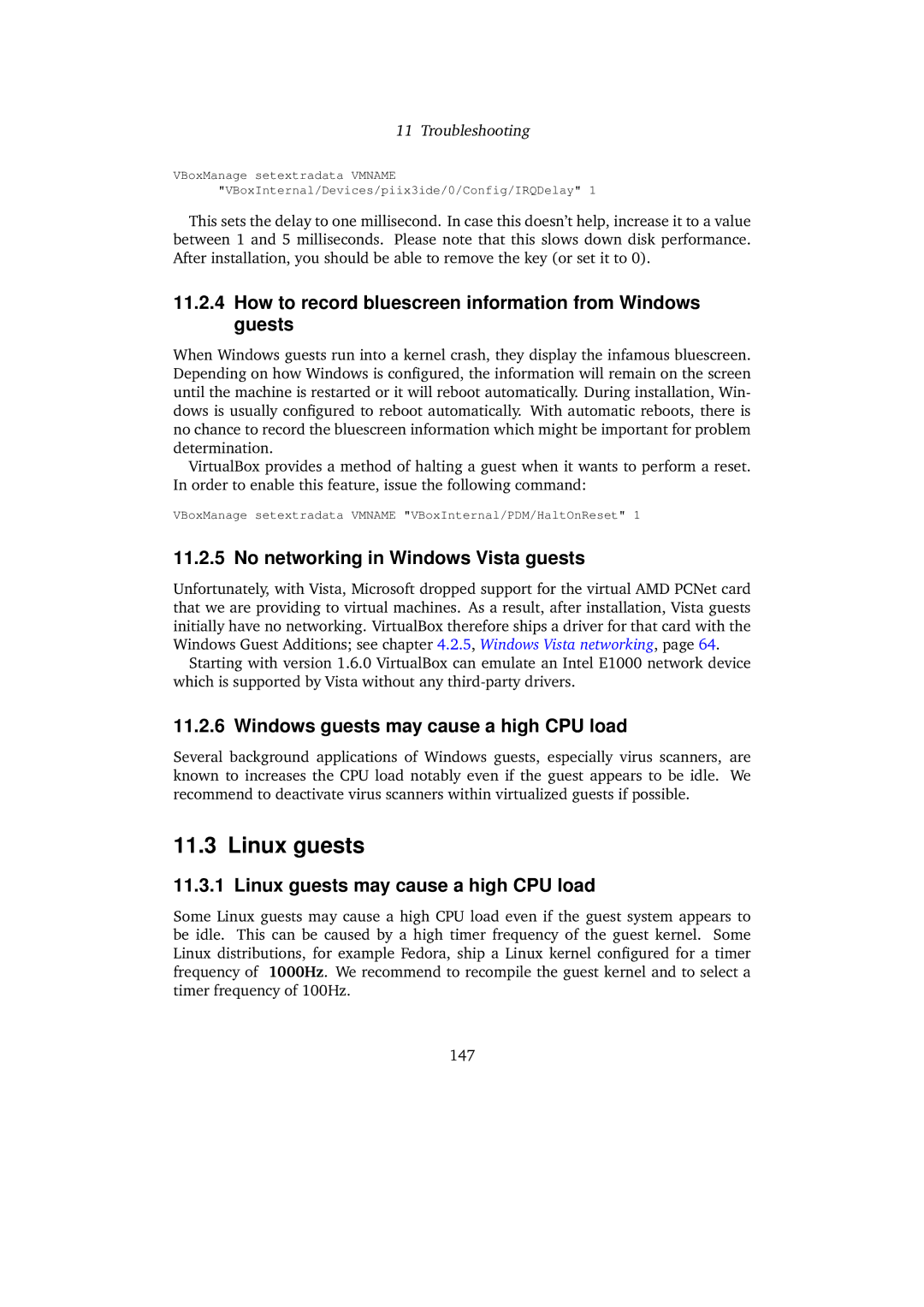11 Troubleshooting
VBoxManage setextradata VMNAME "VBoxInternal/Devices/piix3ide/0/Config/IRQDelay" 1
This sets the delay to one millisecond. In case this doesn’t help, increase it to a value between 1 and 5 milliseconds. Please note that this slows down disk performance. After installation, you should be able to remove the key (or set it to 0).
11.2.4How to record bluescreen information from Windows guests
When Windows guests run into a kernel crash, they display the infamous bluescreen. Depending on how Windows is configured, the information will remain on the screen until the machine is restarted or it will reboot automatically. During installation, Win- dows is usually configured to reboot automatically. With automatic reboots, there is no chance to record the bluescreen information which might be important for problem determination.
VirtualBox provides a method of halting a guest when it wants to perform a reset. In order to enable this feature, issue the following command:
VBoxManage setextradata VMNAME "VBoxInternal/PDM/HaltOnReset" 1
11.2.5 No networking in Windows Vista guests
Unfortunately, with Vista, Microsoft dropped support for the virtual AMD PCNet card that we are providing to virtual machines. As a result, after installation, Vista guests initially have no networking. VirtualBox therefore ships a driver for that card with the Windows Guest Additions; see chapter 4.2.5, Windows Vista networking, page 64.
Starting with version 1.6.0 VirtualBox can emulate an Intel E1000 network device which is supported by Vista without any
11.2.6 Windows guests may cause a high CPU load
Several background applications of Windows guests, especially virus scanners, are known to increases the CPU load notably even if the guest appears to be idle. We recommend to deactivate virus scanners within virtualized guests if possible.
11.3 Linux guests
11.3.1 Linux guests may cause a high CPU load
Some Linux guests may cause a high CPU load even if the guest system appears to be idle. This can be caused by a high timer frequency of the guest kernel. Some Linux distributions, for example Fedora, ship a Linux kernel configured for a timer frequency of 1000Hz. We recommend to recompile the guest kernel and to select a timer frequency of 100Hz.
147
